The following shots are motion captures from real-time video of a training session. The technique demonstrated is a simple horizontal palm strike to the opponent’s ribs, in this case on the opponent’s right side. These shots illustrate some important principles when delivering a palm strike using this method. It uses very little energy but generates a tremendous deal of power.
Please note that this is not the only way to deliver a palm strike in this orientation. This is just one of a few possible methods.
The footage from which I extracted these frames starts with me standing at rest, with my arms down. On my instructor’s signal…
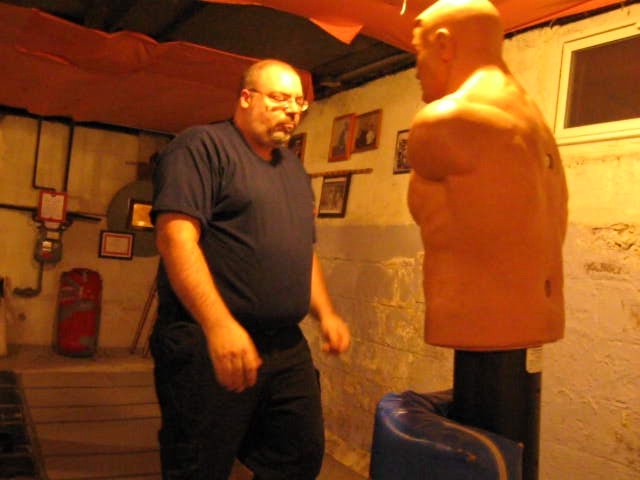
…I step forward, stepping into the strike. This is a modified drop step approach. (The strike can also be thrown from the rooted leg (the rear leg), but that’s not what I’m doing in this shot.) Simultaneously, as I step into the strike, my arm is coming up as my off hand comes up to guard…
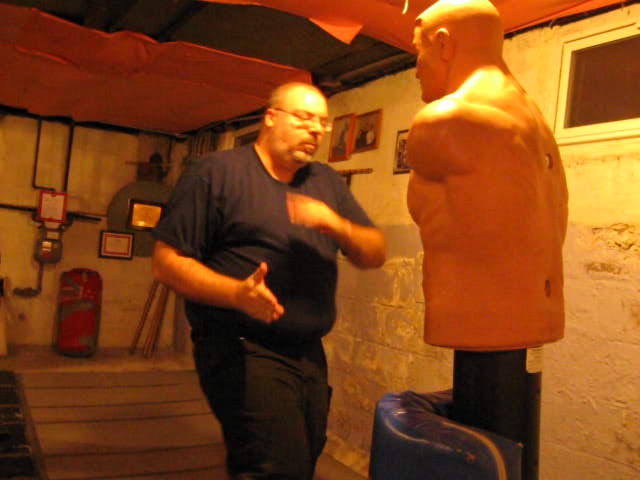
…and I torque my hips, corkscrewing my dropping forward foot into the floor while my hand starts to move fast enough to blur the shot…
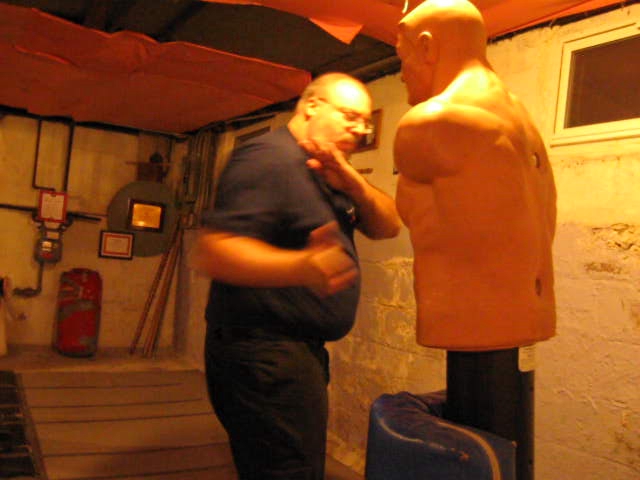
…resulting in my foot reaching its “deepest” point in the floor as my hand strikes the Body Opponent Bag (BOB). I’m very slightly crouched and my off hand is guarding the upper portion of my body. The photo below is of the exact moment my hand strikes BOB’s ribs.
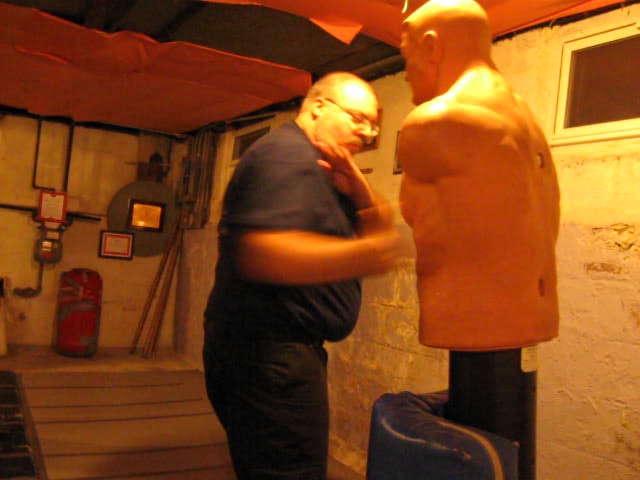
There is, inevitably, follow-through to the strike. At this point my arm is meeting no resistance because BOB is now snapping away from me in reaction to my strike.
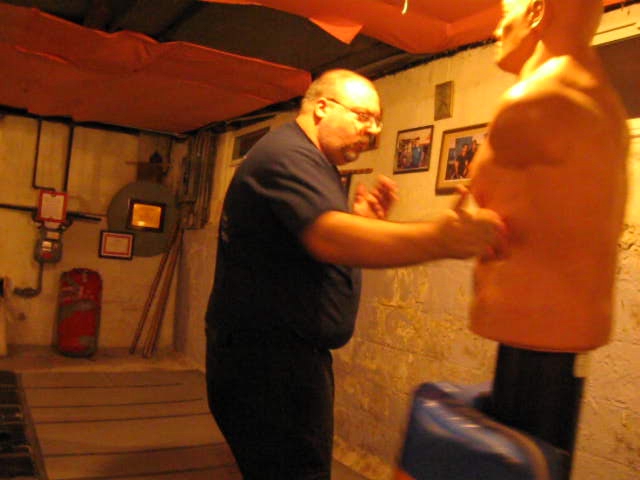
The “hot stove” metaphor applies here: A proper strike thrown with intent doesn’t rest on the opponent, or remain extended; there’s a snapping of the striking limb that draws that limb back slightly, which lends speed and power to the technique. In practice, students are told to envision hitting a hot stove, removing their fits or palms from the hot surface as soon as possible after delivering the blow. In the shot below, you can see me withdrawing my hand slightly after throwing the palm strike, as my off hand continues moving out from my body slightly. I’m resetting, preparing either to continue delivering techniques or to assume a more formal guard.
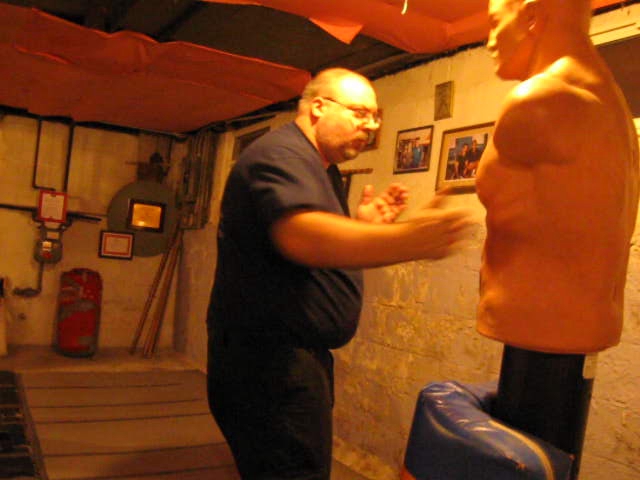
As you can see from these photos, my stance isn’t even very deep, but BOB (who is anchored with sand in his base) is moving very nicely. A properly rooted strike ,or one into which you step as you throw a slap, a palm, or a punch that has proper body mechanics behind it, can deliver a tremendous amount of energy to the target while using very little of your own.
Especially for someone like me who possesses neither great endurance nor above average strength, this is a very important thing to know how to do. It makes practical, reality-based self-defense possible to anyone.
Good stuff. Before I started training in Liu Seong, I was skeptical about the power that could be generated from open hand strikes. Great article.
In our system of Aikijutsu/Jujutsu the most fear people in the Dojo were thoughts that used open hand strikes, my teacher called it a power change, you start using more open hand strikes and less closed hand or fists. I found this to be true when visiting instructors came in from other dojo’s and one Ill never forget was 5’5″ and weighed all of maybe 150 lbs, he hit like a pro heavy weight boxer.